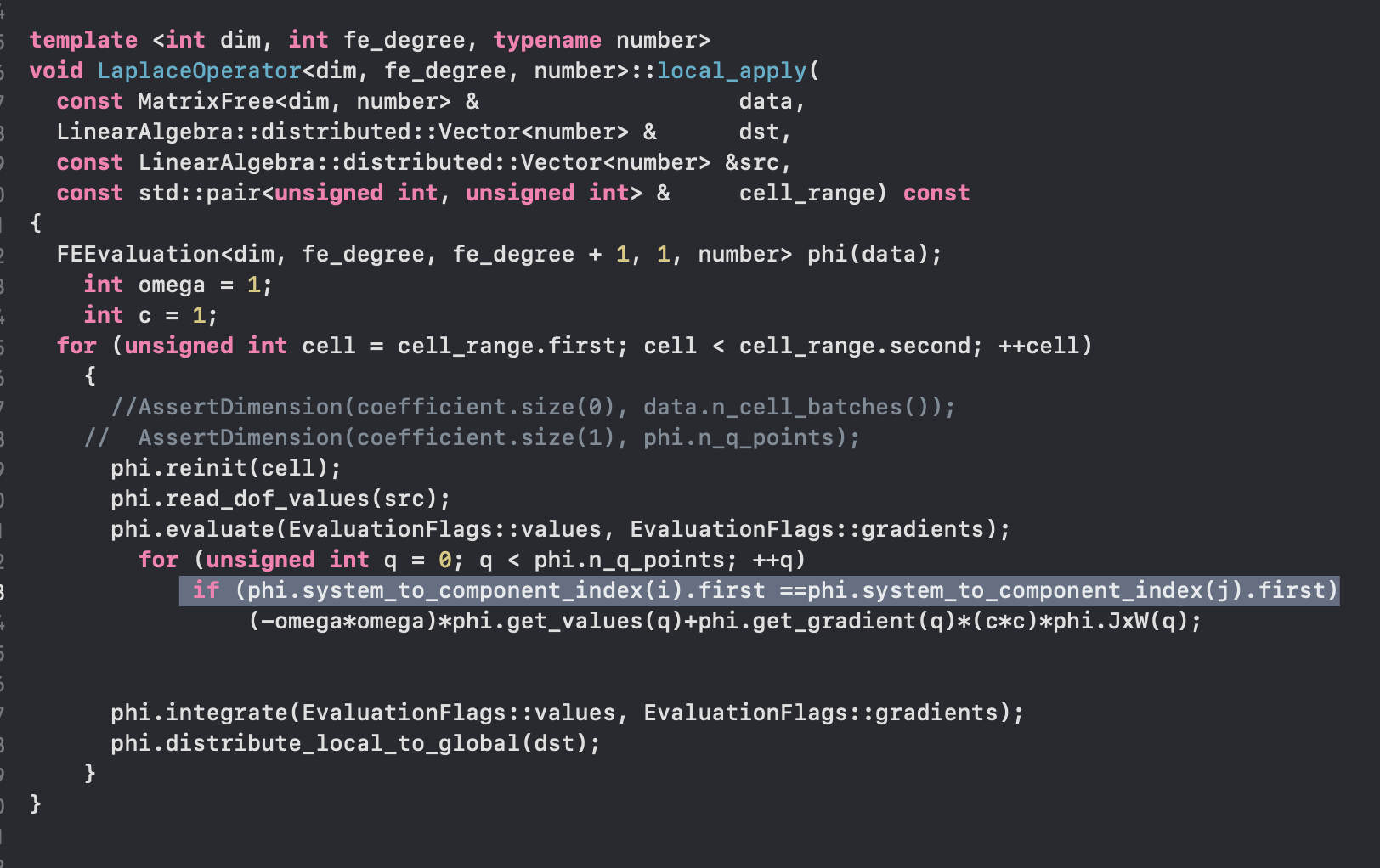MatrixFree & complex-valued Helmholtz equation
60 views
Skip to first unread message
Hermes Sampedro
Oct 13, 2021, 12:07:07 PM10/13/21
to deal.II User Group
Good evening,

I am implementing the problem presented in step-29 using a MatrixFree approach as presented in step-37.
I have few questions that I would like to ask regarding the local_apply() function (shown in step-37):
- I am confused about the way of having access to the different complex components. In this case, as the double for loop (i, j) is avoided, the condition if(phi.system_to_component_index(i).first==phi.system_to_component_index(j).fsst) is not longer valid. How can I include it in this particular case?
- In step-29 we had in the assemble_system(): cell_matrix(i, j) +=(((fe_values.shape_value(i, q_point) *fe_values.shape_value(j, q_point)) *(-omega * omega) +(fe_values.shape_grad(i, q_point) *fe_values.shape_grad(j, q_point)) *c * c) *fe_values.JxW(q_point)); Is it right to write it here as: (omega*omega)*phi.get_values(q)+phi.get_gradient(q)*(c*c)*phi.JxW(q);
- The same has to be repeated for

Thank you very much
Regards,
H.
Hermes Sampedro
Oct 15, 2021, 8:02:10 AM10/15/21
to deal.II User Group
Dear all,
I still have issues figuring out how to have access to the component index when doing a MatrixFree implementation with complex values. I would really appreciate it if someone could help me.
Thank you very much
Regards,
H
peterrum
Oct 18, 2021, 12:32:54 AM10/18/21
to deal.II User Group
Hi Hermes,
I would suggest that you first take a look at step-67 (https://www.dealii.org/developer/doxygen/deal.II/step_67.html): it deals with systems with multiple components. Although I am not particular familiar with step-29, I guess you can express your complex system as two component system so that many aspects shown in step-67 could be used here.
PM
Hermes Sampedro
Oct 19, 2021, 5:27:11 AM10/19/21
to deal.II User Group
Thank you very much for the answer.
I read step-67 and 59 and is somewhere mentioned that there are many different ways to deal with multiple components. In my case (complex values) need only 2.
I was wondering if it is possible to use the MatrixFreeOperators::LaplaceOperator and MatrixFreeOperators::MassOperato with 2 components. If so, could you please give me some clues?
Thank you very much.
Regards,
Hermes
Hermes Sampedro
Oct 19, 2021, 11:21:42 AM10/19/21
to deal.II User Group
Hi again,
I realized that there is an option to set n_components. Is it the right parameter to choose the number of components (assuming that I set the right components on FE_Q)?
using LaplaceType = MatrixFreeOperators::LaplaceOperator<dim, degree_finite_element, degree_finite_element+1, n_components,LinearAlgebra::distributed::Vector<double>>
LaplaceType Laplace_matrix;
If this is right, I would like to ask the last question if you do not mind. Assuming that I create a MatrixFreeOperators::LaplaceOperator and a MatrixFreeOperators::MassOperator
for example:
MassType mass_matrx;
LaplaceType Laplace_matrix;
How could I get an operator K that contains both, mass matrix (M) and laplace (L) matrix as for example: K = M + L? Is that possible with this approach?
Thank you again
Regards,
H.
Reply all
Reply to author
Forward
0 new messages
